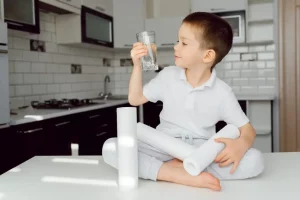How can microplastics be introduced to drinking water?
According to microplastics, they can enter the environment and waterways via multiple channels including:
- Surface run-off due to road marking paints and tire wear debris
- Degraded plastic waste from products flushed into toilets and sinks
- Overflows of sewage and wastewater
- You can use household products such as curtains and utensils for your shower.
- Fibers from textiles and clothing that have been worn-and-tear or washed into the drains and sewage.
- Single-use plastic products like plastic bottles, caps, straws and cups, bags, straws, cups, trash bags bags, wraps or containers, disposable diapers etc.
- Mulch-making plastics made from agricultural plastics
Rainwater can lead to microplastics seeping into the ground, which could pollute water wells. Municipal water can also release chemicals and plastic bits into water when pipes begin to wear. Due to their small size, many standard water treatment systems do not remove all microplastics. These microplastics end up in our drinking water at our homes and in our bodies. But, bottled water is not a better alternative to tap water.
Plastic used in disposable water bottles can contain chemicals that can leach into water, or small plastic particles that can be released into water.
What health effects could microplastics have on your health?
According to study, “the average adult consumes between 126-142 microplastic particles per day and inhales another 130-170 plastic bits each day.” But what happens when microplastics enter the body? Are they absorbed into the body? Do they get into the bloodstream? Do they enter the bloodstream?
Scientists aren’t sure how much microplastic the body is capable of absorbing and how damaging it can cause. The WHO published a report concluding that microplastic particles found in drinking water are safe for human health, at least at the current levels. There are concerns that microplastics could cause adverse effects on human health.
The body may become contaminated by microplastics.
Experts believe that microplastics can be toxic if they accumulate in the body. Microplastics can be found in fragments, film or fibers. This means that they can be made of many different materials and hundreds of chemical additives. Some microplastics can carry harmful chemicals into the body and could also be a source for bacteria and parasites.











